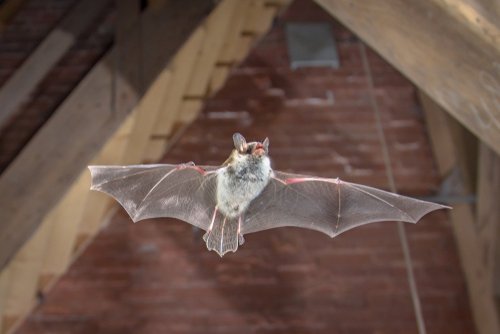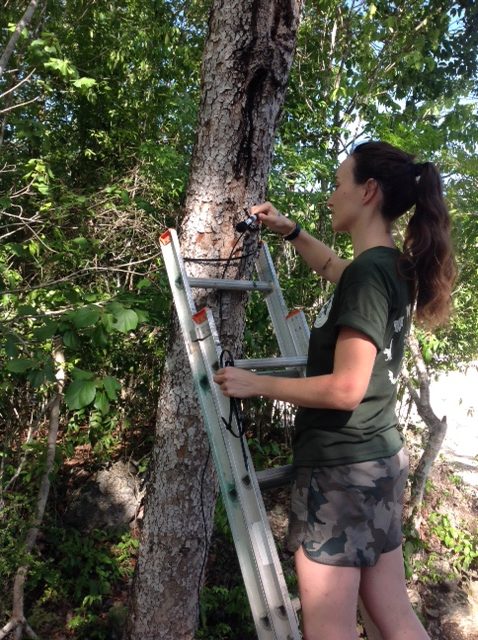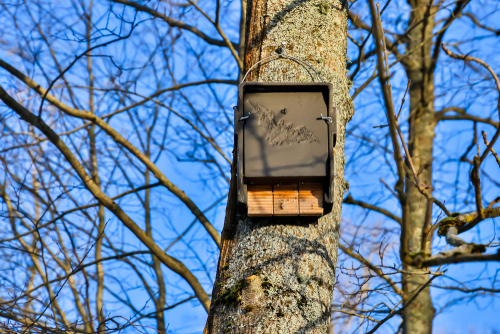
For the third blog in our 2024 series, we’re going back to basics. This is a guide for budding ecologists who are keen to get started in the industry, or anyone interested in learning a little more about professional ecology practices in the UK.
This month we're looking at bats!
About Bats
Bats are true-flying mammals in the order Chiroptera. Their wings are formed from elongated fingers with a thin membrane of skin stretched between each digit and their hind legs.
There are 18 bat species in the UK all from the suborder Microchiroptera (Microbats), which are small, insectivorous species that use ultrasonic calls for hunting and navigation. Each species has a unique ultrasonic call which can be picked up by bat detectors and converted to an audible range for human ears, and are most active at dawn and dusk.
UK bats roost in various locations during the day, including roofs, trees, bridges, and caves. Each species has a preference, with some favouring small crevices or cavity spaces.
As winter approaches and the activity of their prey decreases, bats will go into hibernation from mid-November to late March. They often hibernate in colonies, in places like caves and cellars with stable temperatures and humidity.

Bat Conservation
All of the UK's species are protected by the Wildlife and Countryside Act (1981) and the Conservation of Habitats and Species Regulations (2017). It is important that any intervention or work is covered by a license.
Despite these protective measures, bat populations have faced significant challenges over the last century, leading to a dramatic decline in numbers. The primary causes for their decline are:
- Habitat loss and fragmentation through urban expansion and infrastructure, which alters landscapes for roosting and foraging.
- The use of pesticides and monocultures in intensified agriculture causes losses in bat's insect prey.
- Domestic cats are unlikely to catch a bat in flight, but can fatally injure grounded bats.
- Street lighting and other artificial lighting at night can be disorienting for foraging bats.
- Wind farms, while important as a clean energy source, pose a hazard through collisions with turbines and barotrauma from changes in air pressure.
Survey Methods
As bats are particularly vulnerable to development, and often inhabit disused buildings, effective survey methods are crucial for ecologists to ensure important work can be carried out while protecting the animals and their roosts.
Assessment of a site will often start with a preliminary survey, during which an ecologist can identify indicators of bat presence and potential roosts.

Emergence and Activity Surveys
If signs are found during preliminary assessments, further dusk and dawn surveys can be scheduled throughout the year. They aim primarily to answer: what the site is used for, how frequently the site is used, by which species and by roughly how many individuals.
During emergence surveys, the ecologist will train their equipment on potential roosts in trees and buildings to spot bats leaving, while activity surveys are more focused on the areas that bats use for commuting and foraging.
Handheld bat detectors, static bat recorders, infrared and thermal imagers are key pieces of equipment for both emergence and activity surveys. Species can be identified in the field, but data collected can also be plugged into an analysis software like Kaleidoscope Pro to ensure accuracy.
Roost Inspection Surveys
Roost inspections offer a more detailed view of how bat roosts are used. For example, it may be occupied by hibernating bats or mothers with pups (maternity roosts) which are both particularly important to conserve where possible.
An assessment of the external structure and access points will be carried out before moving on to internal surveys. Equipment thats helps view small, dark crevices and cavities can be used, such as telescopic mirrors, torches, endoscopes and thermal cameras.
A bats require specific conditions to make hibernation sites suitable, devices called data loggers can be used to monitor temperature and humidity. Bat recorders can be placed at the site to establish when the bats are active, either at what time they emerge in the roost or at the end of hibernation.
Trapping
Trapping is used mainly by academics and conservationists when more detailed information about individuals is required. It should only be carried out by highly experienced people, as it requires handling and is a very invasive method of survey.
Large mist nets or harp traps are used to capture the bats safely. The bats' age, weight, sex, size and condition are recorded before release and while captured, it is very helpful for bats to also be fitted with a uniquely coded ring. It makes it possible to identify individuals if they are ever grounded or recaptured.
Mitigation Methods
Where developments will effect bats or their habitats, mitigation must be enforced to minimise disturbance.
- Identification and Relocation: When a roost is identified in an area marked for development, efforts are made to provide alternative roosts. They can relocate by themselves, or be moved by hand or using exclusion devices by an appropriately licensed professional.
- Proactive Planning: Development projects should take into account the presence of bat species, offering safe roosting sites on trees and buildings that are suitable for each species following construction. Click here to take a look at our range of bat boxes.
- Habitat and Hedgerow Preservation: Conserving habitat and preventing hedgerow fragmentation in the area around developments is crucial. These areas serve as essential hunting and navigation grounds for bats, and their preservation is vital for the creatures' survival.
- Pesticide Reduction: The reduction in pesticide use in agriculture and our gardens is pivotal in protecting the insect populations that bats rely on for sustenance.
- Habitat and Hedgerow Preservation: Conserving habitat and preventing hedgerow fragmentation in the area around developments is crucial. These areas serve as essential hunting and navigation grounds for bats, and their preservation is vital for the creatures' survival.
- Lighting Management: Reducing artificial lighting, or implementing red lighting not only benefits bat navigation but also contributes to overall energy conservation.
- Wind Turbine Activity: Curtailing turbine activity during high bat activity periods minimises the chances of collisions and barotrauma. New technology can even detect the presence of bats moving through the area, and automatically stop turbines.

Further Reading
To continue learning about bat ecology and conservation, we recommend taking a look at the resources below.


